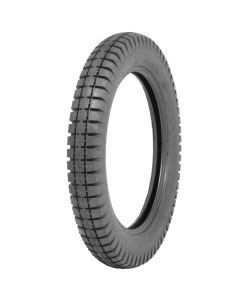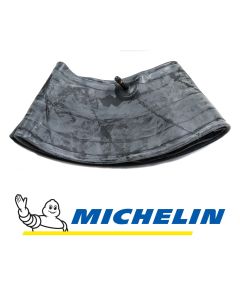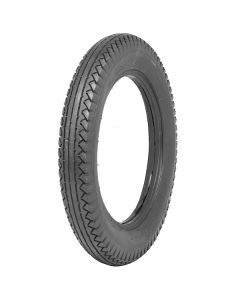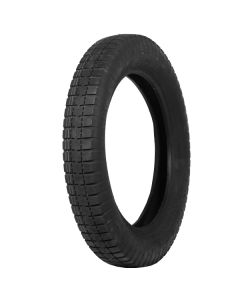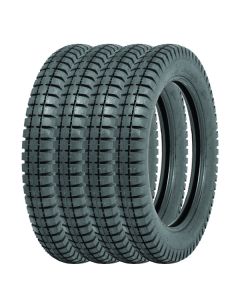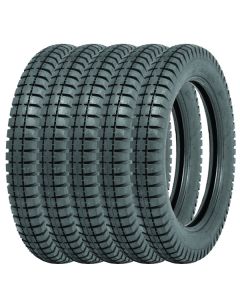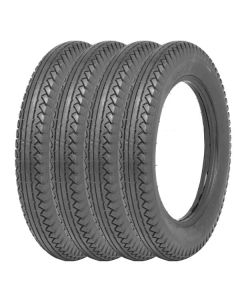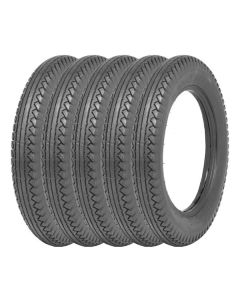Singer Nine Tyres
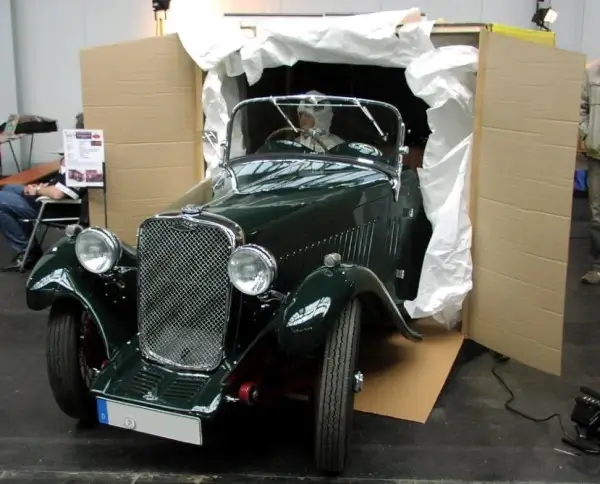
1933 Singer Nine Sports on Dunlop
Singer 9 1933–1948
- The singer Junior generally came fitted with 450 - 18 tyres as standard.
- Our recommendation for the Singer Junior is the 4.00/4.50 x 18 Longstone.
- The Longstone offers a period tread, lighter handling than others in its class, and a lower price tag.
- Depending on your wheel type the best tube for this size is either the Michelin 18MFR Central Valve innertube, or the Michelin Kleber Offset Valve innertube. Innertubes are essential for these wheels.
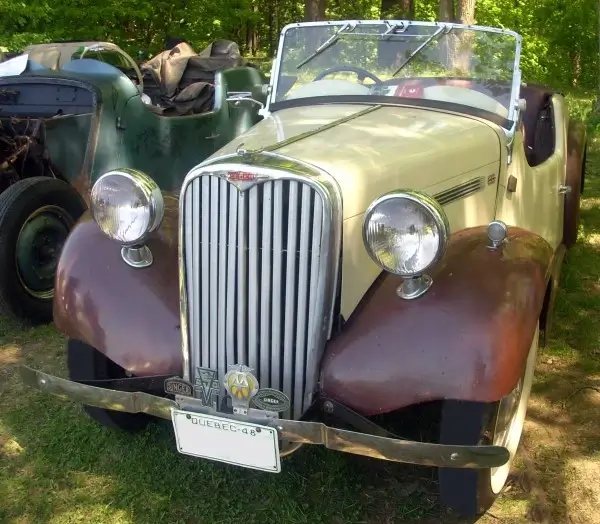
1948 Singer 9 Roadster
History of the Singer Nine
Singer Tyres Explained
Singer developed the Singer Nine in 1932, following the popularity of the older Singer Junior. Although it was a derivative of the Junior, it was a completely new vehicle. The Nine was purportedly a four-seater, with a third or fourth person carrying (short distances) sitting upright in a somewhat confined rear seating compartment. Two deep wells on either side of the prop shaft accommodated the rear legroom.
The Singer Nine was fitted with the 972 cc overhead cam engine but now had an increased bore of 60mm and was fed by twin downdraft S.U. carburettors. The gearbox had very close ratios which made it especially suited to trials work where maximum speed was not as important as power and acceleration. Half elliptic springs were used all around and they were controlled by large adjustable André Hartford friction shock absorbers.
The suspension was particularly superb, offering suppleness with no hint of wheel wobble, rolling, or pitching. Lockheed 10" hydraulic brakes were standard on both the front and rear, allowing for rather strong braking. The Nine produced around 31 horsepower. at 4600 R.P.M. and was capable of reaching speeds of over 66 mph with the windshield lowered flat. The maximum speed was somewhat lower with the windscreen up, at around 64 mph. A comfortable cruising speed of 50 mph was possible.
The Singer 9 was the company's first significant assault on the sports car enthusiast market. It was immediately praised for "looking right" and within a short period of time, it had shown to be a performance winner. Early prototypes dominated the late autumn testing, and a fleet of nine of them dominated the London to Exeter run, claiming eight premier prizes.
When Barnes and Langley drove an essentially stock model at the 1933 Le Mans, it became the first unsupercharged British vehicle under 1000cc to qualify for the Rudge-Whitworth Biennial Cup. The automobile was modified from the factory with a modestly tuned, higher compression engine, revised gear ratios, wider headlights, and a long-range petrol tank that eliminated the back seats entirely.
Singer continued to demonstrate the Nine's prowess in long-distance dependability challenges. Notably, a team of three Nine Sports production models competed in the 6 Day Alpine Trial, which was contested over some of Europe's highest mountain routes. The entire Singer squad finished in second place for vehicles with less than 1100cc. The Singer was a steal for £185, with an astonishing display of instrumentation, an Ashby Brooklands steering wheel, a mahogany dashboard, and upholstery trimmed in furniture hide.
From 1933 through 1937, the Singer 9 was upgraded and updated on a regular basis. One of the most noticeable alterations for 1934 was the adjustment to the front wings. The initial 1933 versions featured a relatively short wing that offered little protection from gravel and mud thrown up by the front wheels. Longer, more elegant front wings were developed to preserve the paint on the side of the automobile.
Significant alterations were also made to the 1935 model, which included running boards, bigger doors, and an elegant sweeping tail in which the spare wheel was hidden by a detachable cover. A lightweight, detachable baggage rack was also produced and installed at the rear of the vehicle.


